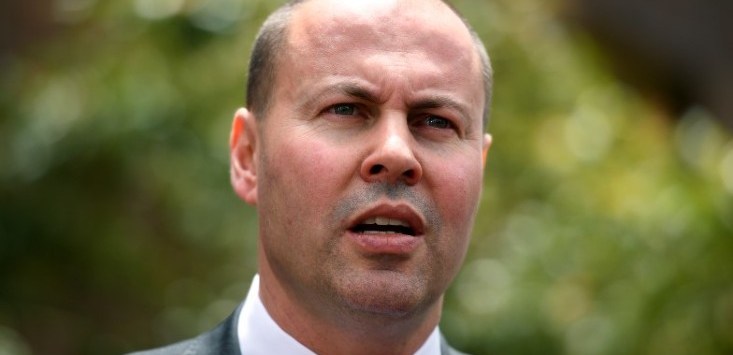
Treasurer Josh Frydenberg.
The government’s JobKeeper wage subsidy package may be the biggest financial outlay of any Australian government ever. But, even as applications open today, the scheme is still surrounded with a bit of mystery and a lot of confusion.
There’s one caveat in particular that hasn’t had much attention, but that could prove a crucial sticking point for many small businesses already under serious cashflow pressures.
While still a wage subsidy, the JobKeeper payments are paid out as a reimbursement. That means, in order to be eligible to claim, employers must have already paid out employees’ wages from March 30 to the time they receive the payment.
Payments will be backdated until March 30, but are not expected to start hitting bank accounts until the first week of May, meaning employers will have to cover at least five weeks’ worth of payroll before they see a cent.
That also applies to employees who have been stood down, who are on long-term leave, and who have been let go and re-employed — that is, employees the business has already declared it is unable to pay.
Employers can pay $1,500 fortnightly, or a $3,000 lump sum after four weeks. But, the payment must be have been made by April 30.
This means businesses are looking at a significant outlay at the end of April, even if they’re seeing no income at all.
That money will be reimbursed, but not until a week later, at the very earliest.
The latest Treasury fact sheet stresses that you cannot claim JobKeeper payments for employees who have been paid less than $1,500 per fortnight between March 30 and April 30.
And you cannot claim the payment in advance.
“The JobKeeper payment is a reimbursement from us to an employer in arrears, and cannot be paid in advance in any circumstances,” the fact sheet says.
The latest advice from the Treasury seems to be that if this presents “cashflow difficulties”, businesses “may want to speak to their banks to discuss their options”.
Stacey Price, founder of Healthy Business Finances tells SmartCompany this has always been part of the deal.
“However we were hoping and waiting the ATO would provide some leniency,” she says.
Some banks have said they will consider the JobKeeper payments as a basis to seek credit, the Treasury says. However, that may not be the most attractive option.
This suggestion is “alarming in itself”, Price says.
“Who wants to go into debt to pay staff who might not even be working ‘normal hours’?” she asks.
“Answer is nobody.”
Aside from the cashflow gap, this also leaves a big question mark for businesses that have ‘variable income’, or haven’t seen the required 30% drop in income that would make their claim straightforward.
For businesses like this, the ATO will have discretion to consider claims from these businesses, if they can prove they have been adversely affected by COVID-19. However, we don’t know yet how exactly this will work, or how long it will take.
It’s possible we could see businesses applying for the JobKeeper scheme, paying their workers the wages required, and then finding they’re not eligible.
“It is still a great incentive,” Price says.
“However, the short-term cash flow shortage is nothing short of a bloody headache for most business owners.”
Are you affected by this? Are you thinking twice about applying for the JobKeeper scheme? Let us know.
This article was updated on April 21.


COMMENTS
SmartCompany is committed to hosting lively discussions. Help us keep the conversation useful, interesting and welcoming. We aim to publish comments quickly in the interest of promoting robust conversation, but we’re a small team and we deploy filters to protect against legal risk. Occasionally your comment may be held up while it is being reviewed, but we’re working as fast as we can to keep the conversation rolling.
The SmartCompany comment section is members-only content. Please subscribe to leave a comment.
The SmartCompany comment section is members-only content. Please login to leave a comment.